7 Allergy-Friendly Flowers to Plant in Your Garden
These hypoallergenic flowers won't trigger a bout of sneezing when you're in the weeds this season.
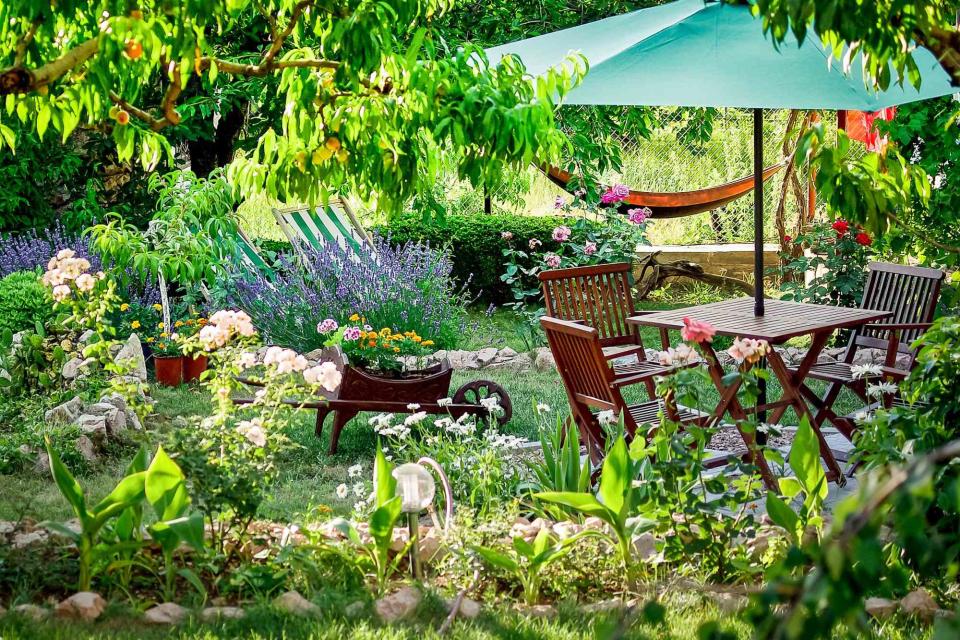
Bright green buds are finally starting to peek their heads through the soil, erupting into a colorful floral explosion—which means that springtime magic is in the air. But that's not what's making your nose tickle: Unfortunately, the arrival of spring's bounty coincides with and exacerbates allergy season. As pretty as these flowers are, many are also fragrant and pollen-dense; they can irritate the nose and eyes, which makes them no-go options if you're a gardener with seasonal allergies. Fret not. While many flowering plants do trigger allergies, there are also plenty of hypoallergenic flowers that add a burst of color to your yard without making you feel itchy or congested.

Related: 13 Full-Sun Spring Perennials to Plant for a Gorgeous Flower Garden
Hydrangeas
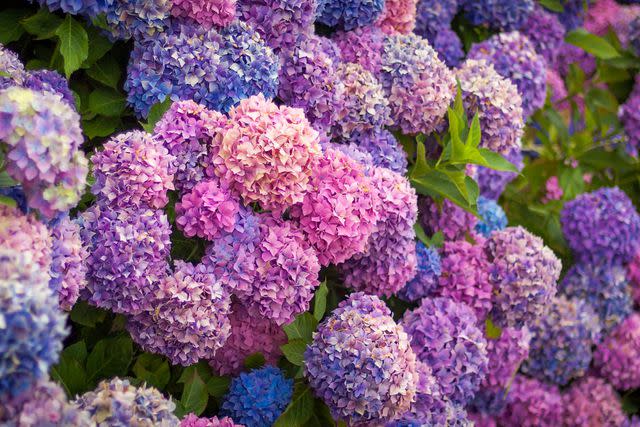
Hydrangeas are perennial, deciduous shrubs that are known for their voluminous clusters of blue, pink, and purple blooms. "Hydrangeas are lower pollen-producing perennials, which tend to be easier on those with pollen allergies," says Teri Valenzuela, a plant expert and natural science manager for Sunday. "These plants also tend to bloom in the summertime, which helps to avoid additional pollen production during peak allergy season."
Care Advice
Zone: 5 to 9
Light: Partial to full sun
Water: "While these plants require a good amount of water to establish, once established, they require little irrigation," says Valenzuela.
Planting Tips: Make sure to give your hydrangea plenty of room to grow. At maturity, these shrubs can stretch 4 feet high and 5 feet wide.
Related: How to Grow and Care for Hydrangeas, the Summer Showstoppers Every Gardener Should Plant
Tulips
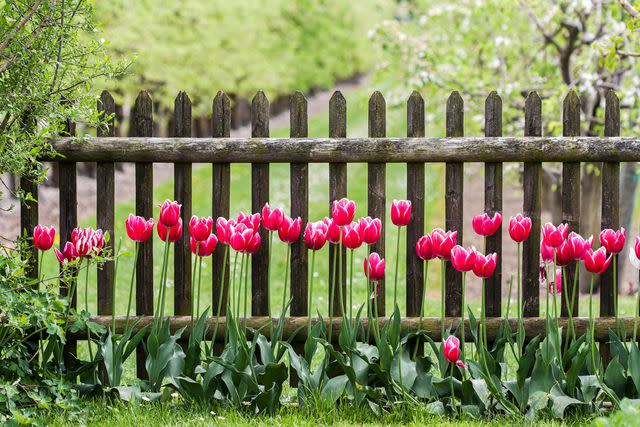
A springtime icon, tulips are a low-maintenance perennial that you can essentially set and forget. "Tulips are good for allergy sufferers because they don't have a really strong scent, which can trigger allergic reactions," says Kaylyn Hewitt, head of floral design for The Bouqs Co. "They also don't have a ton of pollen on their blooms."
Care Advice
Zone: 3 to 8
Light: Full sun to partial shade
Water: Add water only if soil is bone dry (they can survive without much additional irrigation).
Planting Tips: Space bulbs 4 to 6 inches apart and three times deeper into the soil than the bulb's length. Either chill your bulbs at around 40 degrees for 10 weeks before planting or plant them in December or January for spring blooms.
Bird of Paradise
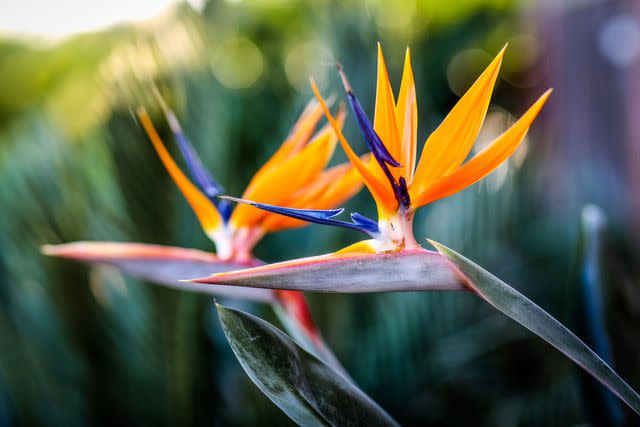
Ideal for warm and tropical climates, the bird of paradise is a beautiful flowering shrub that makes a striking addition to any yard. Its blooms, which give the illusion of a bird in flight, are quite dramatic. Best of all, this allergy-friendly flower doesn't produce airborne pollen, which makes it ideal for allergy sufferers. "With glossy, oversized leaves that grow upwards to impressive heights, this plant offers dramatically fast growth and can adapt to multiple light levels," notes Lindsay Pangborn, plant expert for Bloomscape.
Care Advice
Zone: 10 to 12
Light: Bright, indirect light with some direct light, as well
Water: Keep soil moist
Planting Tips: Allow for 4 to 6 feet of spacing for small varieties and up to 6 feet for larger types. Fertilize monthly in the spring and summer, when new leaves are actively developing.
Rosemary
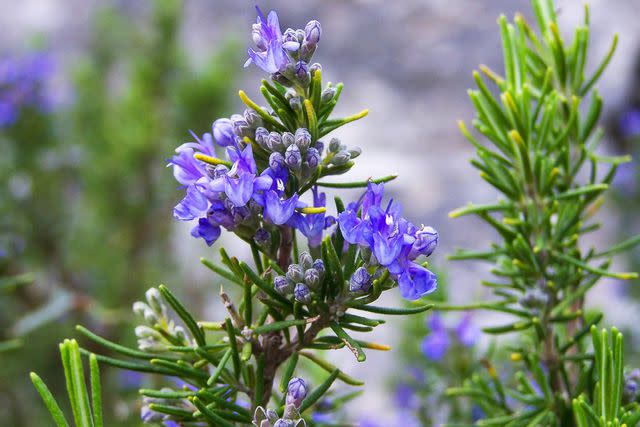
You may know rosemary for its rich scent and evergreen foliage, but this kitchen herb produces petite white-and-purple flowers, too. It's a delicious food seasoning, but the plant's rosmarinic acid is also anti-inflammatory, says Kirsten Rechnitz, principal at Eden Garden Design. In that sense, rosemary can actually help ease allergy symptoms come warmer weather (and it certainly won't make them worse).
Care Advice
Zone: 7 to 12
Light: Full sun
Water: When soil feels dry
Planting Tips: According to Rechnitz, rosemary thrives in well-draining, sandy soil. Avoid soggy soil, which can kill this plant.
Related: Our Guide to the USDA Gardening Zones—Plus, the Best Plants to Grow in Your Region
Hostas
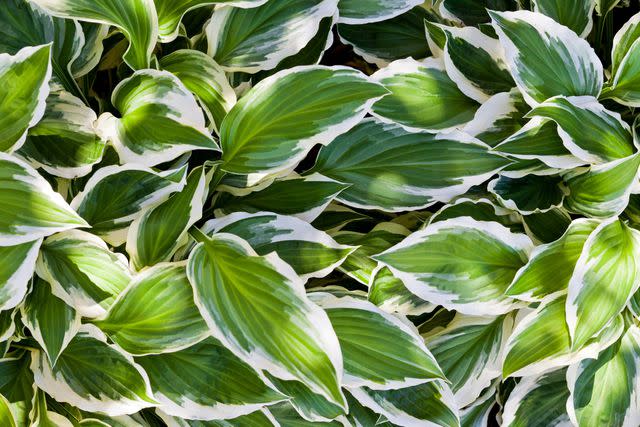
Hostas lend lush greenery to any garden—and we love its beautiful sprays of purple-and-white flowers. "Whether you're planting it as a border, ground cover, or in containers, this perennial can do it all," says Valenzuela. What's more, the buds don't have a scent, produce low amounts of pollen, and are also self-pollinating, making them a great hypoallergenic flower for your garden.
Care Advice
Zone: 3 to 8
Light: Partial shade
Water: When soil feels dry
Planting: Hostas are robust and can tolerate drought, but prefer moist, well-draining soil. All hostas species spread, so give them some room when planting.
Roses
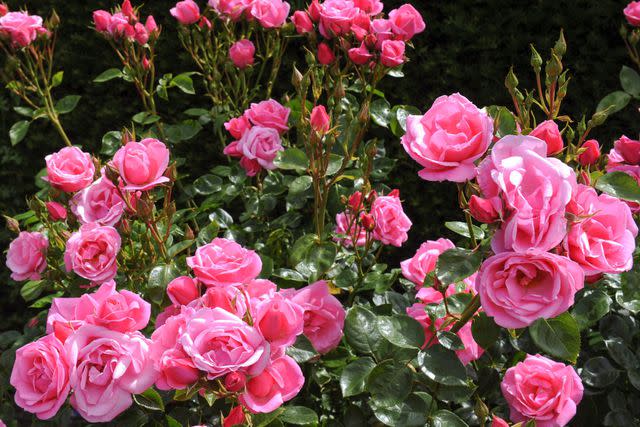
With their light, calming fragrance, roses make you want to inhale deeply. Fortunately, this popular garden flower is allergy-friendly, since it produces low amounts of pollen. The pollen roses do produce is also heavy, so it won't float through the air similar and make your eyes water. To further cut down on their sneeze potential, avoid wild rose varieties; instead, stick to cultivated species.
Care Advice
Zone: 4 to 9
Light: Direct sunlight
Water: Keep soil moist
Planting Tips: Roses prefer well-draining, nutrient-dense soil. They can range in size depending on variety, so make sure you give your roses enough room to flourish. For the most beautiful blooms, fertilize every two to four weeks during the growing season.
Parodia Cacti
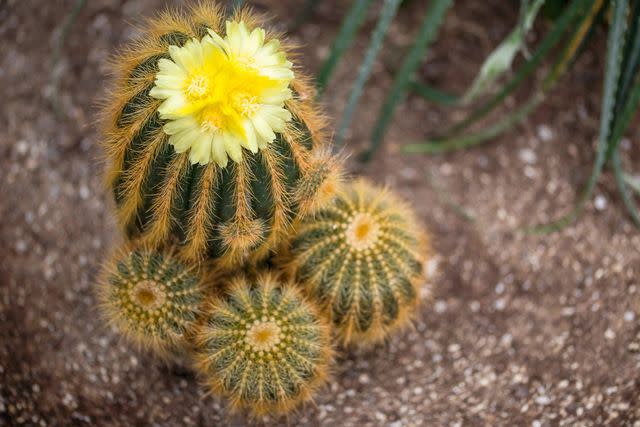
Cacti are beloved for their otherworldly shapes and fascinating spines, and a handful of them are also known to produce gorgeous blooms. That includes the parodia, a plump, stout, and quickly-growing small ball succulent that yields golden flowers in spring and summer. "These sharp looking plants aren't just beautiful additions to your indoor and outdoor garden. Cacti also produce less pollen than most other blooming plants," says Valenzuela.
Care Advice
Zone: 9 to 11
Light: Full sun
Water: When soil feels bone dry
Planting Tips: The parodia cactus comes in a variety of species, and many grow in beautiful clusters that top out anywhere from 1 foot to 4 feet wide.

